#Capillary action
Text
Enhancing the Cheerios Effect
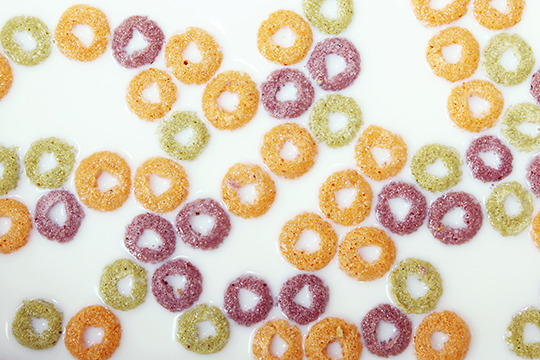
The Cheerios in your morning cereal clump together with one another and the bowl's wall due to an attractive force caused by the curvature of their menisci. A recent study looks at how this effect changes when you're pulling objects out of the liquid. (Image credit: Cheerios - D. Streit, experiment - H. Bense et al.; research credit: H. Bense et al.; via APS Physics)
Read the full article
142 notes
·
View notes
Text

New 'papertronics' offer biodegradable alternative to traditional circuits
As the Internet of Things connects more devices into a collective network—even single-use sensors like food packaging, agriculture or "smart bandages"—the need for biodegradable electronics grows increasingly urgent.
Binghamton University Professor Seokheun "Sean" Choi sought to investigate his ideas about integrated papertronics. A new research paper published in Advanced Sustainable Systems reports his latest findings—and they could revolutionize how we monitor the world around us.
"The biggest problem with paper for electronics is that the paper is highly porous and rough," said Choi, a faculty member in the Thomas J. Watson College of Engineering and Applied Science's Department of Electrical and Computer Engineering. "These properties are very helpful for paperfluidics, because those devices require high surface area and roughness—but for electronics, they pose a critical challenge."
Read more.
#Materials Science#Science#Electronics#Paper#Flexible electronics#Capillary action#Binghamtom University
27 notes
·
View notes
Text
Figure 7.2 shows another result of adhesive forces.

"Chemistry" 2e - Blackman, A., Bottle, S., Schmid, S., Mocerino, M., Wille, U.
0 notes
Text
capillary action occurs when the spiteful fluid makes fun of my dumb ass for spilling it
15 notes
·
View notes
Text
now idk what the fuck a "capilla" is but i do know that reaction must be stamped out and denied the right to speak.
3 notes
·
View notes
Text
capillary action was mentioned red blood cells were poorly drawn
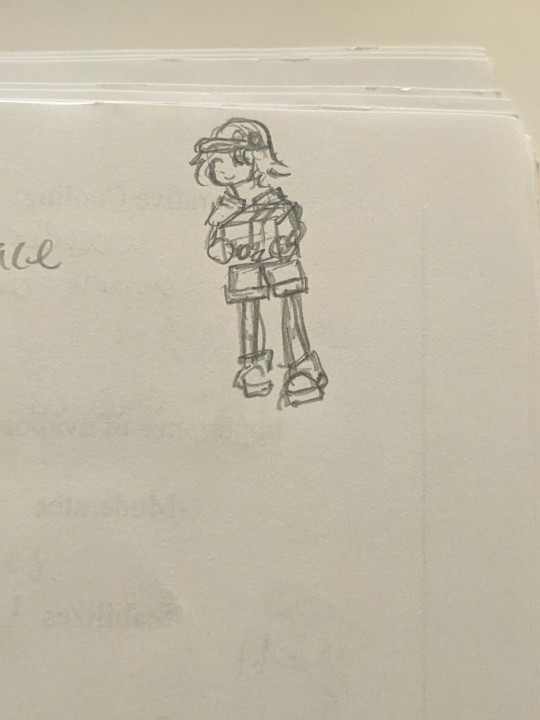

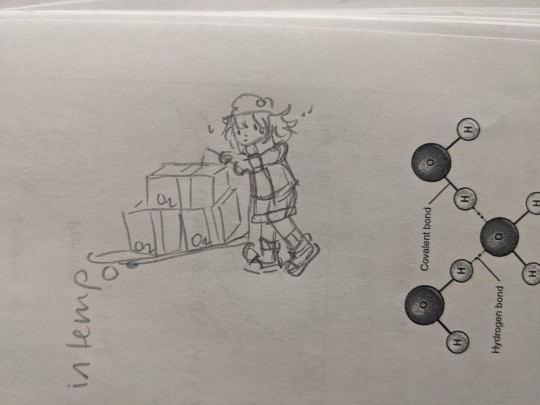
4 notes
·
View notes
Text
Covid results in two minutes besties
2 notes
·
View notes
Text
one month until the art crawl aaaa i need my primer to get here so i can start on my paintings!! im doing a garden/leaf series (will explain later, it's representative but not exactly) and a painting for march '23
if there's space for my giant paintings from my mfa show, those will go up for sale as well. and i can make a few simple pastel cutout type drawings IF i have time
linocuts will not be involved in the art crawl this year i don't think . but. i am looking into making a zine or something, even though i don't have anything important to say.
0 notes
Text
I love watching the capillary action when I'm panel lining my models
0 notes
Text
The thorny lizard or by its much cooler name, the thorny devil, is, as is to be expected, thorny
The thorns are important for defense - the lizard is covered in hard spikes which deters predators as it's difficult to swallow, it also has a false head on its back and when it feels threatened it will tuck its head between its legs and present it's false head
Also this lizard is covered in hard scales and it will collect condensation during the night. It then has a channel to the lizards mouth to drink water.
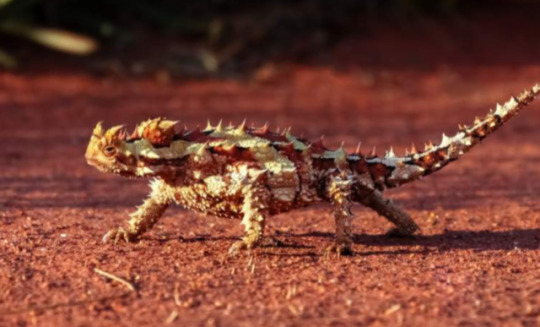
#also some science thing which i don't understand enough to put in the full post#but with capillary action the water can travel to the mouth through the skin#lizard posting
0 notes
Text
"Mosquito Egg Raft"

A raft of mosquito eggs floats on water in this award-winning image by Barry Webb. Capillary effects stretch and distort the interface, creating a complicated meniscus where the eggs meet the water. (Image credit: B. Webb from CUPOTY; via Gizmodo)
Read the full article
55 notes
·
View notes
Text

Single drop of ethanol to revolutionize nanosensor manufacture
Macquarie University engineers have developed a new technique to make the manufacture of nanosensors far less carbon-intensive, much cheaper, more efficient, and more versatile, substantially improving a key process in this trillion-dollar global industry.
The team has found a way to treat each sensor using a single drop of ethanol instead of the conventional process that involves heating materials to high temperatures.
Their research, published in Advanced Functional Materials, is titled, 'Capillary-driven self-assembled microclusters for highly performing UV detectors.'
"Nanosensors are usually made up of billions of nanoparticles deposited onto a small sensor surface—but most of these sensors don't work when first fabricated," says corresponding author Associate Professor Noushin Nasiri, head of the Nanotech Laboratory at Macquarie University's School of Engineering.
Read more.
#Materials Science#Science#Ethanol#Nanotechnology#Sensors#Materials processing#Capillary action#Macquarie University
33 notes
·
View notes
Text
had a conversation with a client today and apparently i'm weird sooooo it's time for a poll
I LOVE getting my blood drawn or donating partly because I like helping people but mostly cause capillary action is cool and it makes me think of vampires
#polls#idk if i should content warn for this or not but theres nothing graphic soooo#reblog to let me have a good sample size pleaseeeee
3K notes
·
View notes
Text
Everything You Need To Know About Writing Bruises

Welcome to the latest instalment in my ongoing series on crafting realistic wounds in fiction. After delving into stab wounds, burns, and gunshot wounds, we're turning our attention to another crucial element in bringing your characters and their stories to life: bruises.
Bruises are possibly the most common miswritten injury in fiction. As tempting as it might be to make the protagonist's skin bruise when the morally grey characters clutches her wrist, scenes like this only serve to ruin immersion and make your readers wonder whether this could realistically happen.
Unlike the other wound types I've covered in this series, the internet doesn't seem to have a lot of writing advice for bruises. So, here's my comprehensive guide to writing bruises.
Types of Bruises
Understanding Bruise Formation:
Bruises are a common occurrence in everyday life, from the accidental bump into a table corner to the aftermath of an intense sporting event. But before we dive into the art of crafting realistic bruises in your writing, let's start by understanding how bruises form.
Bruises, also known as contusions, result from the rupture of blood vessels beneath the skin's surface, typically veins and capillaries. When these vessels break, blood leaks into the surrounding tissue. The body's natural response to this injury is to initiate the healing process, causing inflammation and discolouration.
Differentiating Types of Bruises:
Not all bruises are created equal. Understanding the various types of bruises will help you describe them accurately in your writing. Here, we'll explore the common distinctions among bruise types.
Contusions: Contusions are the most typical type of bruises. They often occur due to blunt force or trauma, resulting in pain and discolouration.
Subcutaneous Bruises: These are the most typical bruises resulting from blunt force trauma. Subcutaneous bruises appear as dark, discoloured areas under the skin and can change in colour as they heal, starting with red or purple and transitioning to green, yellow, and eventually fading away.
Hematoma: A hematoma is a more severe type of bruise caused by the collection of blood outside of blood vessels. Hematomas often appear as a raised lump under the skin and can take longer to heal.
Petechiae: Petechiae are tiny, red or purple pinpoint spots that can form when small blood vessels near the skin's surface break. These are often a sign of more severe underlying medical conditions.
Ecchymosis: Ecchymosis is a large bruise that covers a wider area, typically caused by substantial trauma or medical conditions. These bruises tend to be darker and may require more time to heal.
Tattoo Bruises: Sometimes, an object's pattern or texture may leave a distinct mark, resembling a tattoo. These can occur when someone is subjected to direct pressure from an object with an intricate or textured surface.
These distinctions will enable you to convey the type of bruise accurately in your storytelling, reflecting the nature and severity of the injury your character has endured. So, when crafting a scene in which your character sustains a bruise, you can choose the type that best suits your narrative.
Causes of Bruises:
Bruises can occur for various reasons, and knowing these causes will help you craft believable narratives. It's important to note that not every physical interaction results in a bruise, and your characters shouldn't bruise from actions that typically don't lead to bruising. For instance, someone holding another person's arm tightly is unlikely to cause a bruise.
Common Causes of Bruises:
Blunt Force: The most common cause of bruises is blunt force trauma. This can occur from falls, accidents, or impacts, such as bumping into furniture or being struck by an object.
Pinching or Squeezing: Intense pinching or squeezing, especially on delicate skin areas, can lead to bruises. For example, if a character pinches their arm or thigh too hard in frustration, a bruise may develop.
Repetitive Motion: Overusing or repeatedly striking a particular area, like through strenuous exercise or certain work activities, can cause tiny blood vessels to rupture and lead to bruising.
Medical Conditions: Some medical conditions, like blood disorders or certain medications, can make a person more prone to bruising.
Ageing: As skin becomes thinner and more fragile with age, it's more susceptible to bruising even from minor bumps or impacts.
It's crucial to consider the appropriateness of a bruise in your story. Understanding when and how a character can realistically develop a bruise will help maintain the credibility of your narrative.
Characteristics of Bruises:
Accurately depicting bruises in your writing involves considering various characteristics, such as:
Colour Changes: Bruises typically undergo a series of colour changes during the healing process. They usually start with shades of red, purple, or blue due to the initial bleeding under the skin. As the bruise heals, it can turn green, yellow, or brown before fading entirely. These colour shifts can be an essential detail when describing the progression of a character's injuries.
Size and Shape: The size and shape of a bruise depend on the impact's force and the underlying blood vessels' distribution. Bruises can be small, like a fingertip mark, or large, covering a significant portion of the body. Irregularly shaped bruises may indicate multiple impacts or trauma.
Tenderness and Swelling: A fresh bruise is often tender to the touch, and the area around it may be swollen. Describing your characters' reactions to this tenderness and swelling can make the injuries feel more lifelike.
Pain and Discomfort: Bruises can be painful, and the level of pain may vary depending on their size and location. Detailing your character's pain and discomfort can enhance the realism of your narrative.
Itching and Healing: As a bruise heals, it may become itchy. This can be an interesting detail to add, showing the progress of the injury and your character's recovery.
Duration: Mention the duration of a bruise. Some may heal relatively quickly, while others can linger for weeks. Knowing how long a character's bruise lasts can impact their daily life and the story's timeline.
Factors Affecting Bruise Appearance and Healing:
Bruises aren't one-size-fits-all injuries. Their appearance and healing process can vary based on several factors:
Location: Bruises can look different depending on where they occur on the body. For instance, a bruise on a bony area, like the shin, might appear more pronounced compared to a bruise on a fleshier part, like the thigh.
Age and Health: The age and overall health of your character play a significant role. Younger, healthier characters may heal faster and have bruises that change colour and fade more quickly. Conversely, older characters or those with health issues might have bruises that take longer to heal.
The severity of the Injury: The force and severity of the impact determine the size, shape, and colours of the bruise. Consider whether the injury was caused by a minor bump, a hard fall, or a violent struggle.
Character's Skin Tone: The appearance of a bruise can be affected by the character's skin tone. It might be more challenging to spot a bruise on darker skin, and the colours may appear differently.
Treatment and First Aid: The way a character treats a bruise can affect its healing. Mention how characters apply ice, warmth, or topical remedies to their bruises.
Character's Pain Tolerance: Some characters may have a higher pain tolerance and can bear a bruise without much discomfort, while others might find even a small bruise painful.
Clothing and Cover-Up: Characters may conceal bruises with clothing or makeup. This can impact how they are perceived by others.
By understanding these factors, you can tailor your descriptions to create a more authentic portrayal of bruises in your writing.
Healing Process of Bruises:
A key element in writing realistic bruises is depicting their healing process. Here's how to effectively describe it:
Gradual Changes: Highlight the evolving nature of the bruise over time. The progression of colours—red to blue, green, and yellow—is a visual cue that indicates the bruise's age. This chronological shift in colour offers readers insights into the passage of time within your narrative.
Concealment and Exposure: Address the issue of concealing or revealing the bruise. Depending on its location, characters may need to don concealing clothing, apply makeup, or use other means to hide or reveal their injuries. Such choices can significantly impact the character's interactions and relationships.
Medical Care: Mention whether the character seeks medical attention for their bruise. Medical professionals can provide insights into the severity of the injury and the potential complications that might arise during the healing process. Additionally, you can explore any treatments, remedies, or advice offered by healthcare providers.
Impact on the Character: Describe how the presence of a bruise affects the character's daily life, activities, and interactions with others. A prominent facial bruise, for instance, can influence the character's self-esteem, social interactions, or how they are perceived by those around them. Emotions and psychological effects should not be overlooked.
Varied Healing Timelines: Recognize that the healing process can vary from one character to another. Factors such as age, overall health, and the severity of the injury can affect how quickly the bruise fades. This variation can add depth and authenticity to your character's experiences.
Scarring and Discoloration: Note that severe injuries may leave lasting scars or discolouration on the skin. Explore any permanent marks or changes that remain after the bruise has healed.
By incorporating these aspects into your narrative, you can create a nuanced portrayal of the healing process of bruises and its impact on your characters.
I hope this blog on Everything You Need To Know About Writing Bruises will help you in your writing journey. Be sure to comment any tips of your own to help your fellow authors prosper, and follow my blog for new blog updates every Monday and Thursday.
Looking For More Writing Tips And Tricks?
Are you an author looking for writing tips and tricks to better your manuscript? Or do you want to learn about how to get a literary agent, get published and properly market your book? Consider checking out the rest of Haya’s book blog where I post writing and publishing tips for authors every Monday and Thursday! And don’t forget to head over to my TikTok and Instagram profiles @hayatheauthor to learn more about my WIP and writing journey!
#hayatheauthor#haya's book blog#haya sameer#haya blogs#writers on tumblr#writer community#writer tools#writer blog#writer stuff#writer wednesday#writer tips#creative writing#writers of tumblr#writerscommunity#writeblr#writing community#writer spotlight#writer things#writing prompt#writing tools#writing stuff#writing#writing life#writing inspo#writing help#writing advice#writing inspiration#writing ideas#writing things#writing tip
723 notes
·
View notes
Text
As a stationery and fountain pen affictionada...
This. Still. Makes. Me. Laugh.

Let me explain why:
Look at how Tim is holding the pen. Stylistic choice or not, that grip means he's putting pressure on the pen. That he's heavy handing his writing.
Now look at the pen. That's a fountain pen. Fountain pens work through combined capillary and gravity action that makes the ink flow down to the nib naturally when the pen is in writing position and in contact with a writing surface; which is, depending on the model, between 45° and 60° angle in the vast majority of the cases.
Most fountain pens aren't made to sustain heavy hand writers. In fact, a great number of them is used to correct the grip, angle, muscle memory and heaviness of a person's handwriting style, since the simple act of touching the nib on paper easily makes the ink come out.
Now, look at Damian's implied facial expression and body language. Yes, we can all shrug it's just his rivalry with Tim that makes him react like that, it's a perfectly reasonable way to explain it all. However, for a fountain pen affictionado, for someone who loves fine writing instruments, that right there is a sentence of death.
Damian isn't just seeing Tim use his pen. He's seeing Tim, a person who couldn't care less for the writing tools he's using, obliterate the tines by placing way too much force on them. He's horrified of his favorite writing instrument being damaged by Tim's disregard with it, which is the most common reaction ever when any fountain pen lover sees their favorite pen being held and used by another person without their authorization.
Damian isn't overreacting at all.
The fountain pen community can confirm it.
[EDIT]
I know it's no ones concern, but as a lover of fountain pens, I kind of had to give a huge zoom-in in a version of this that isn't as pixelated and... guys, I think I know which fountain pen is this!
I may be wrong, but I think that's a Lamy Safari Black Charcoal model!
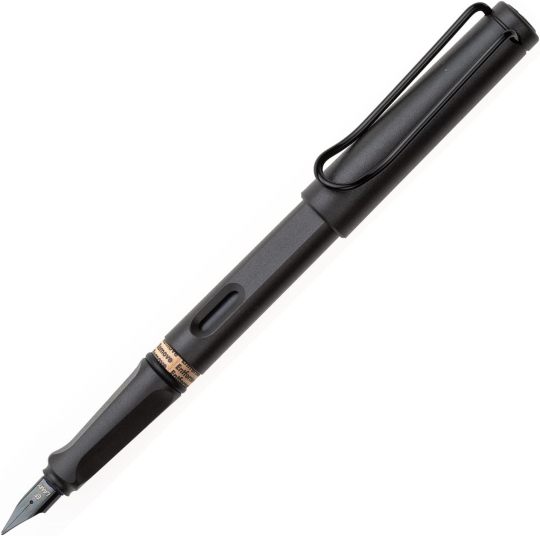
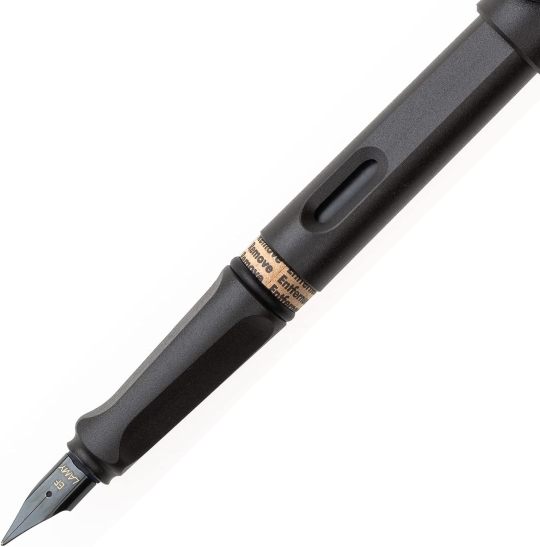
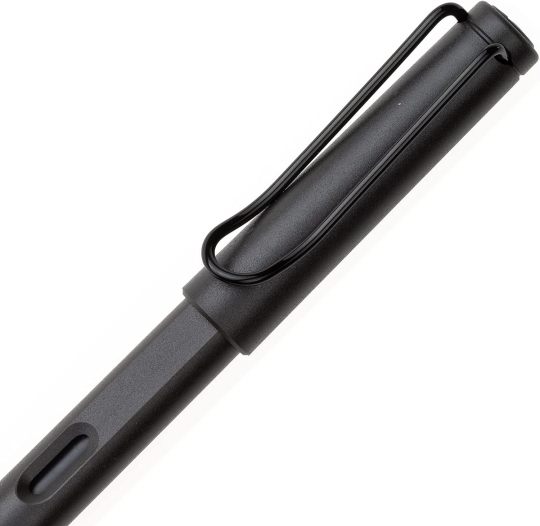
In the comic we can't see the window or the triangular grip very well (I can kind of see a shadow of the triangular shape, but I'm not calling it without being certain) and it looks a bit chonkier, but look at that cap! That minimalist cap with the sturdy yet simple, black clip and small gap on the top of the cap! That's a cap for a Lamy Safari model if I ever saw one!
Yes, maybe it can be some other fancier and more expensive brand, most Lamy's I've seen are between 30-60USD with special collections being a little closer to the 80USD mark on really expensive shops online, but let me make an argument for it.
A Lamy Safari fountain is considered a popular workhorse among affictionados and artists alike. Not only it's reliable, with a simple yet stylish body and construct that serves to pretty much every occasion, its construct is simple in terms of maintainance and handling. Want to go travel on a plane? No problem, take the cartridges with you! Prefer bottle ink? Not a problem at all, here's the converter for all your bottled ink needs! Oh, the standard medium nib isn't to your liking? Let's find one that you enjoy, there's European extra fine (0.38) to broad, stub, italic and even for writing musical score! Still not enough? Hey, there are many manufacturers that make their own customized nibs for a fair price, maybe give them a try? And the best part? The nibs aren't so expensive that you're breaking the bank with them, so if you break one you can get another with relative ease.
This sweet pen is a monster at work 24/7. No wonder it's a popular model among beginners and long term users and lover of fountain pens. They're just that good.
409 notes
·
View notes
Text
Uncharismatic Fact of the Day
Many desert animals have special adaptations that allow them to either find water in extremely dry areas or survive long periods without it. One of the more unusual adaptations is that of the thorny devil lizard. Its skin is covered in microscopic grooves which are able to draw water up out of the ground and transport it directly to the lizard's mouth via capillary action-- the same process that pulls water up into a paper towel.

(Image: A thorny devil (Moloch horridus) pausing for a drink by Christopher Watson)
If you like what I do, consider leaving a tip or buying me a ko-fi!
#thorny devil lizard#Squamata#Agamidae#dragon lizards#squamates#lizards#reptiles#uncharismatic facts
672 notes
·
View notes